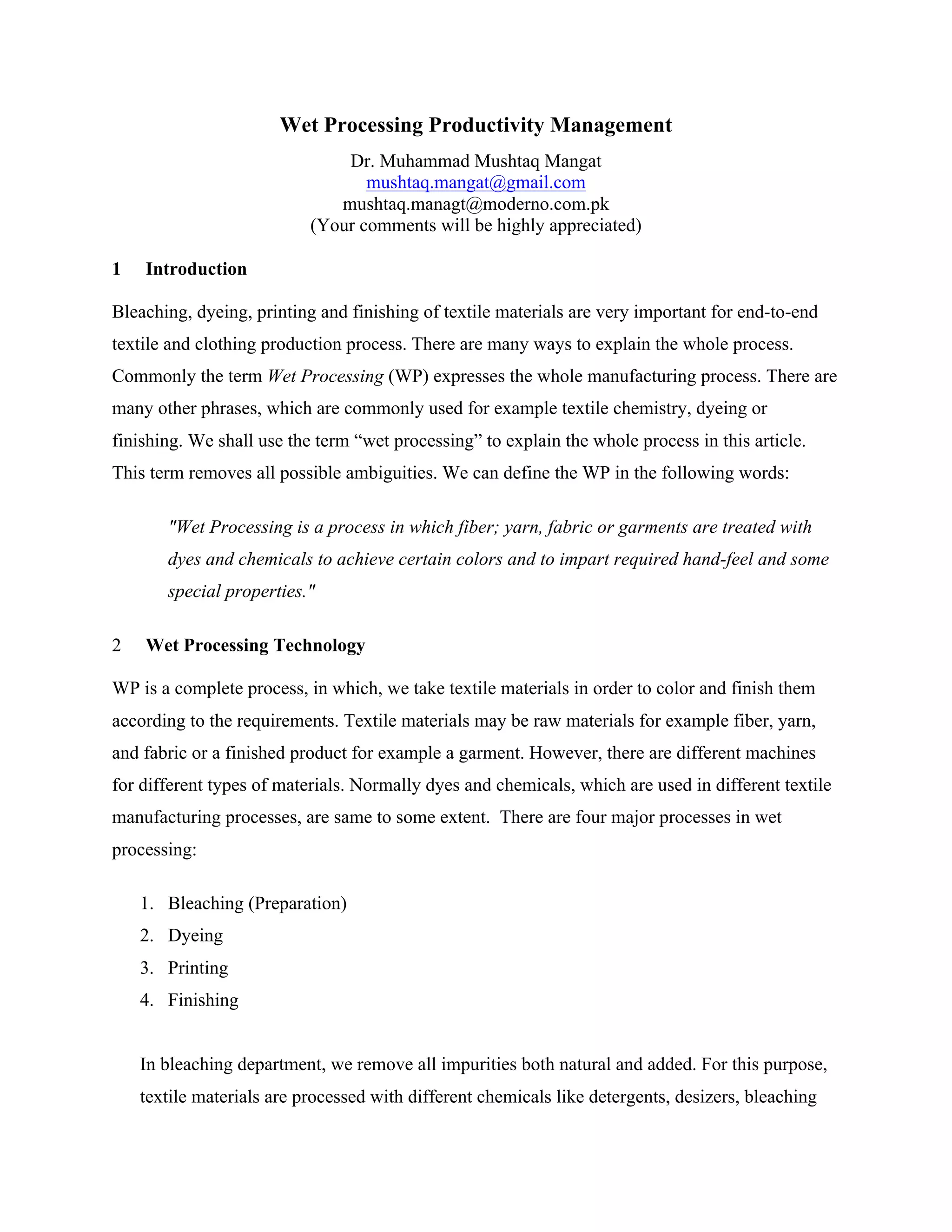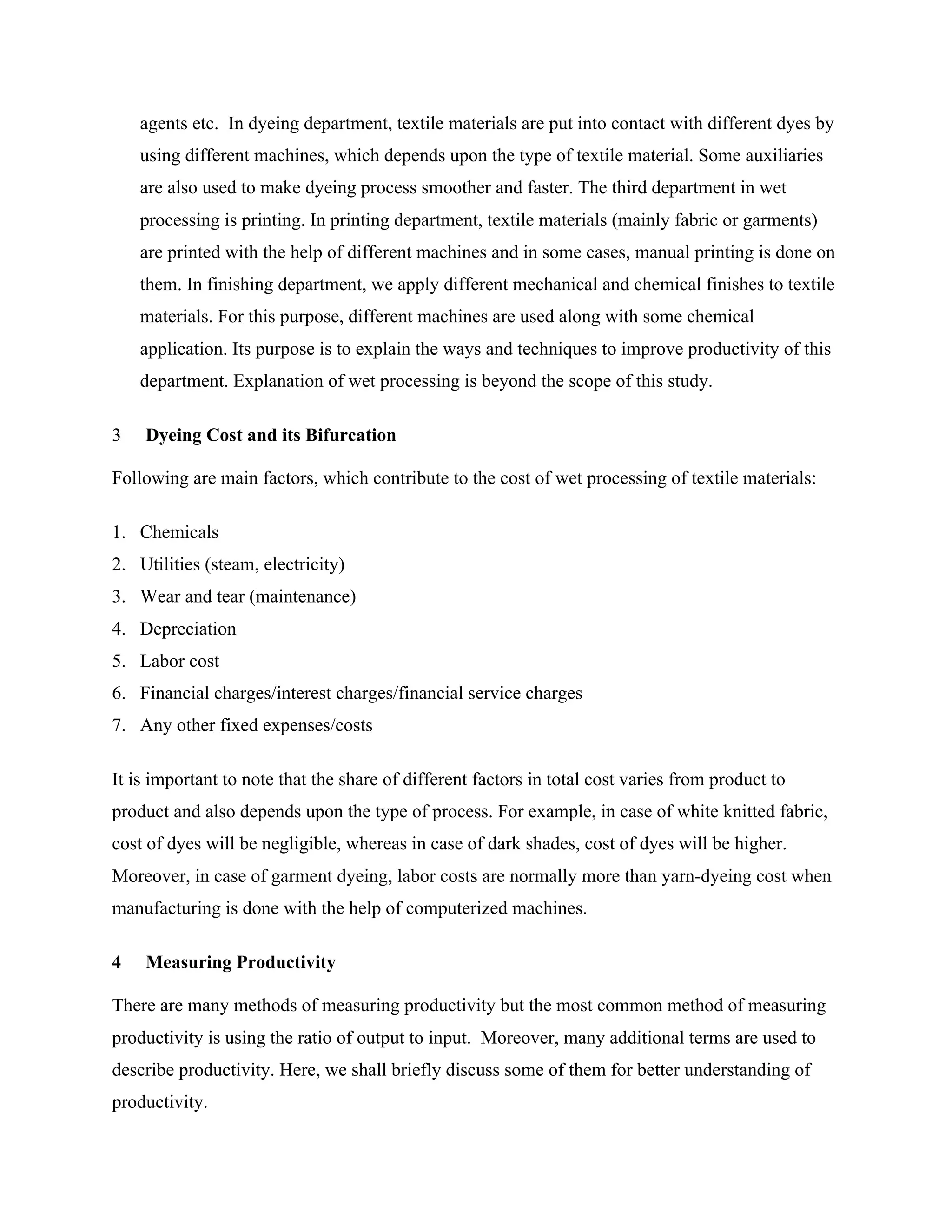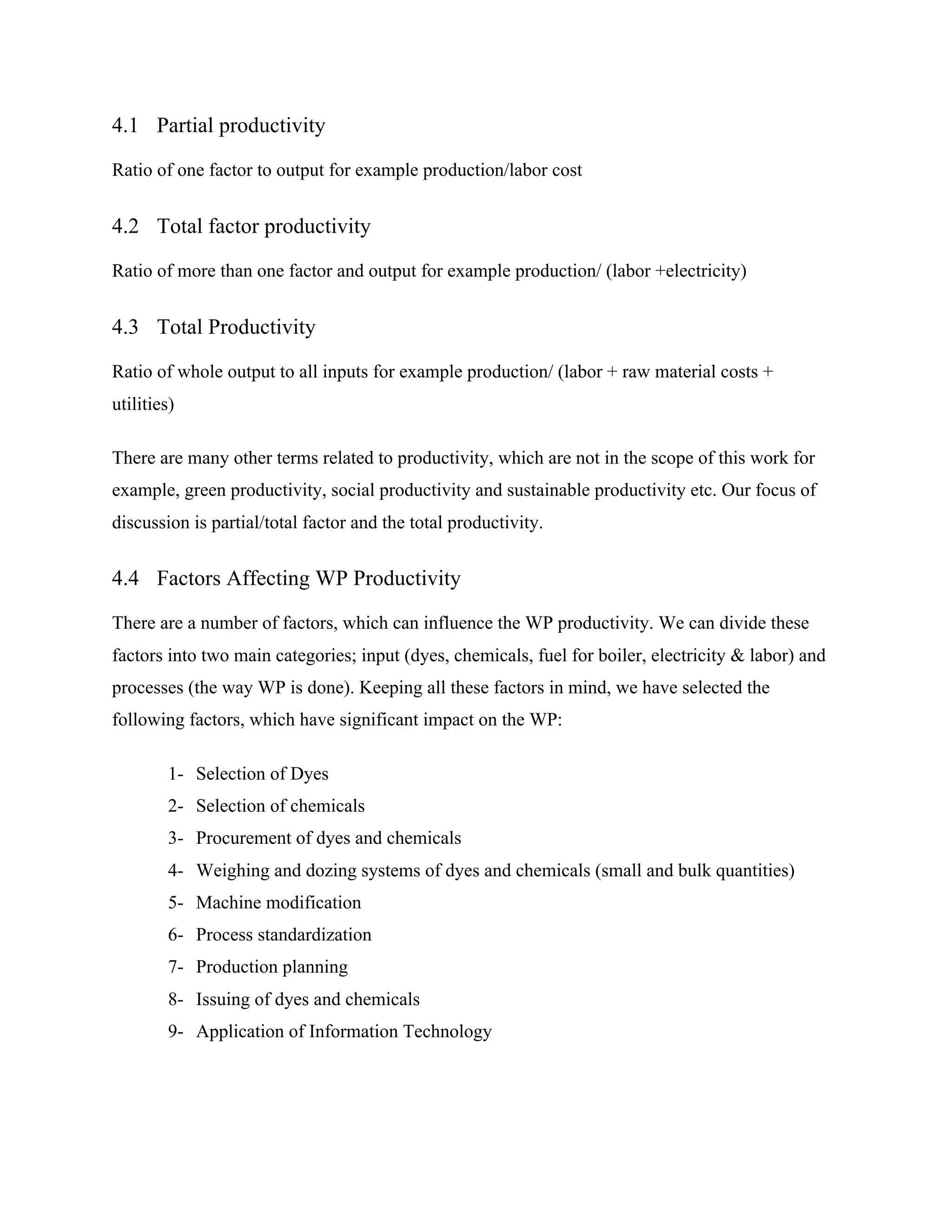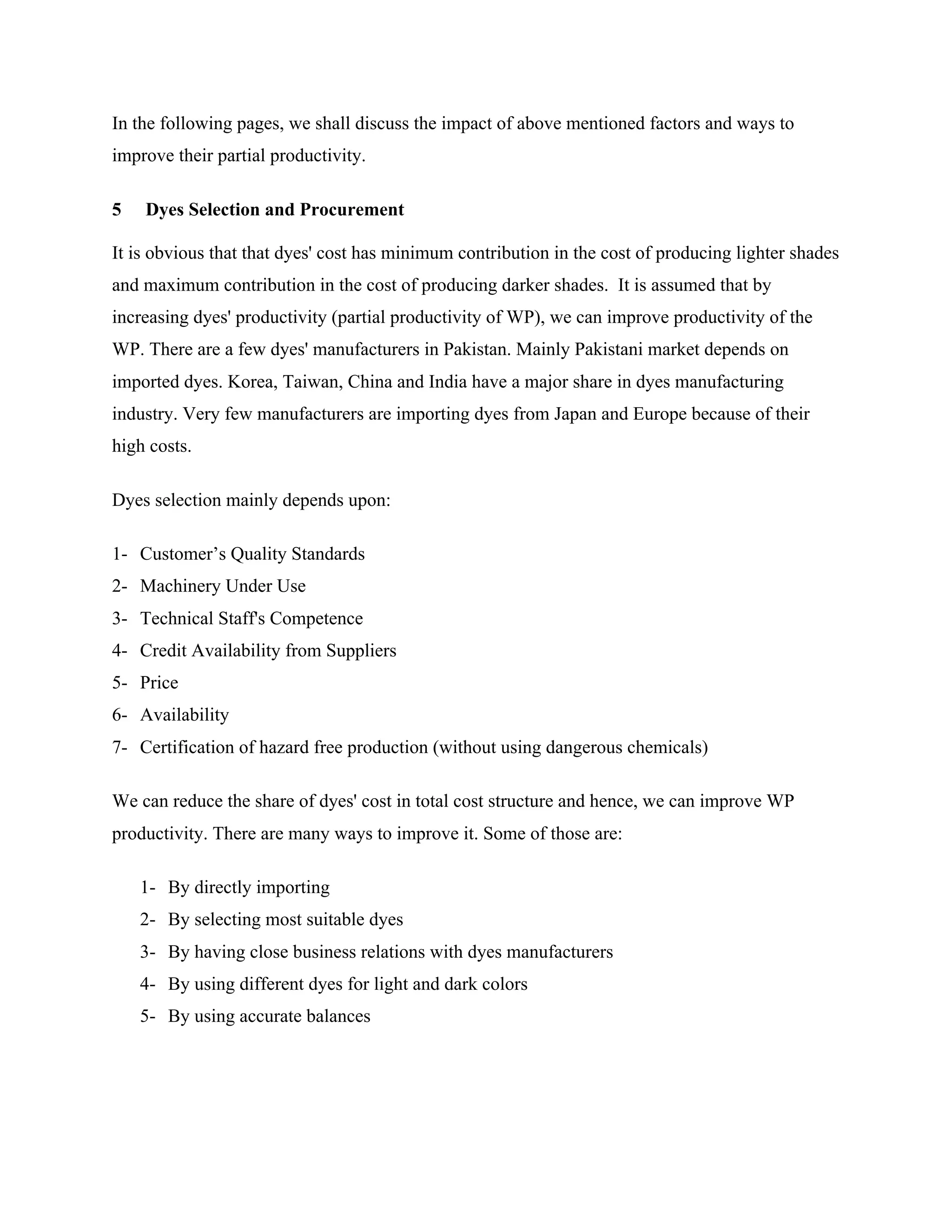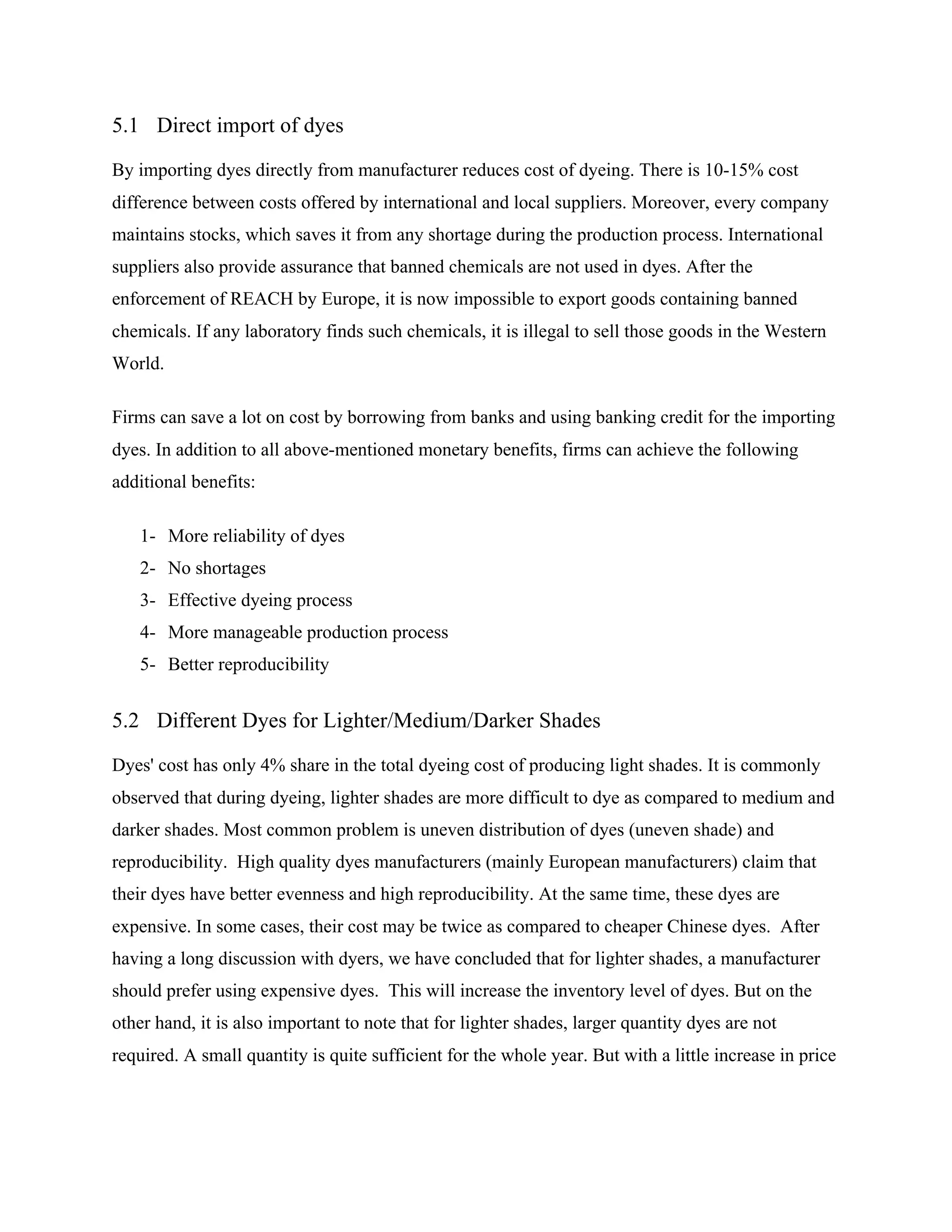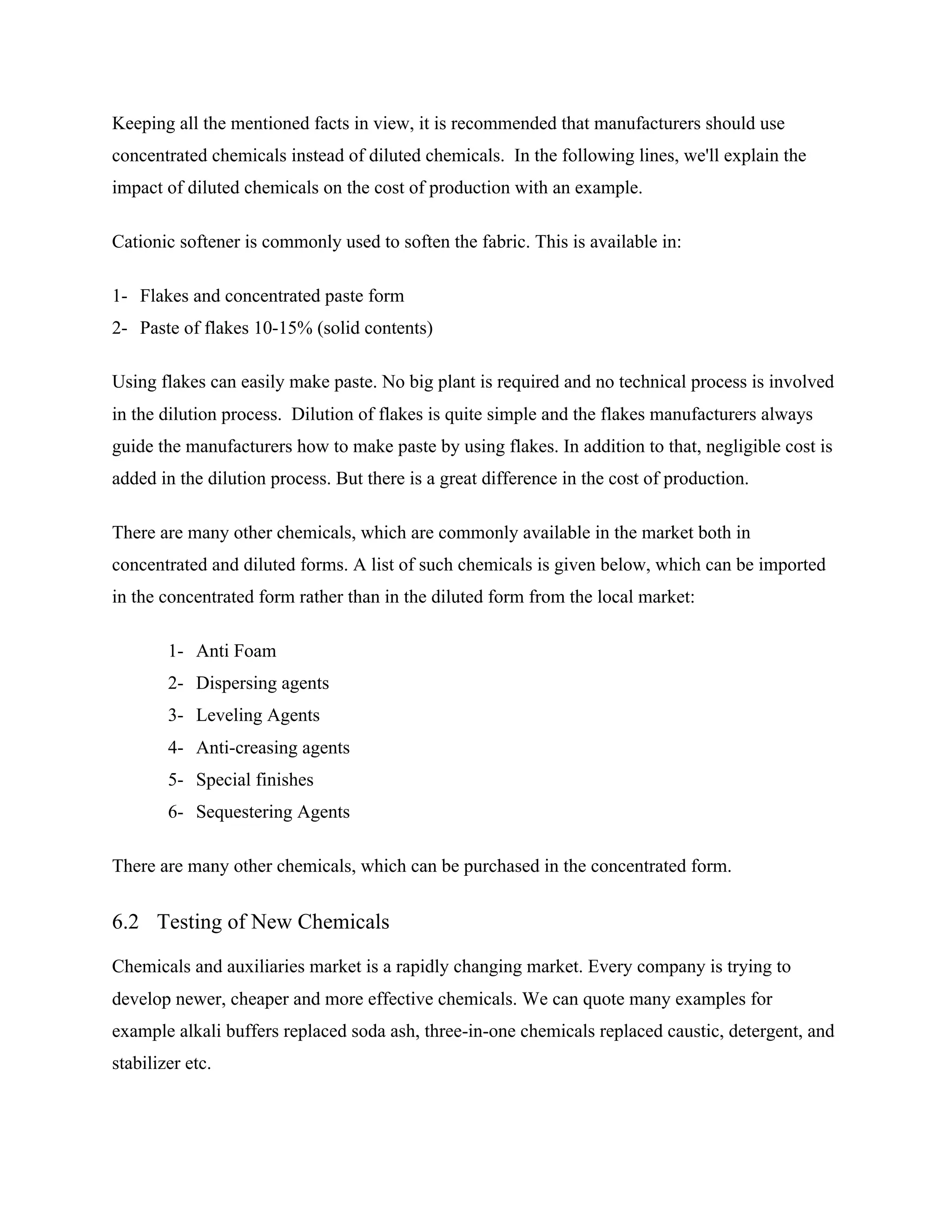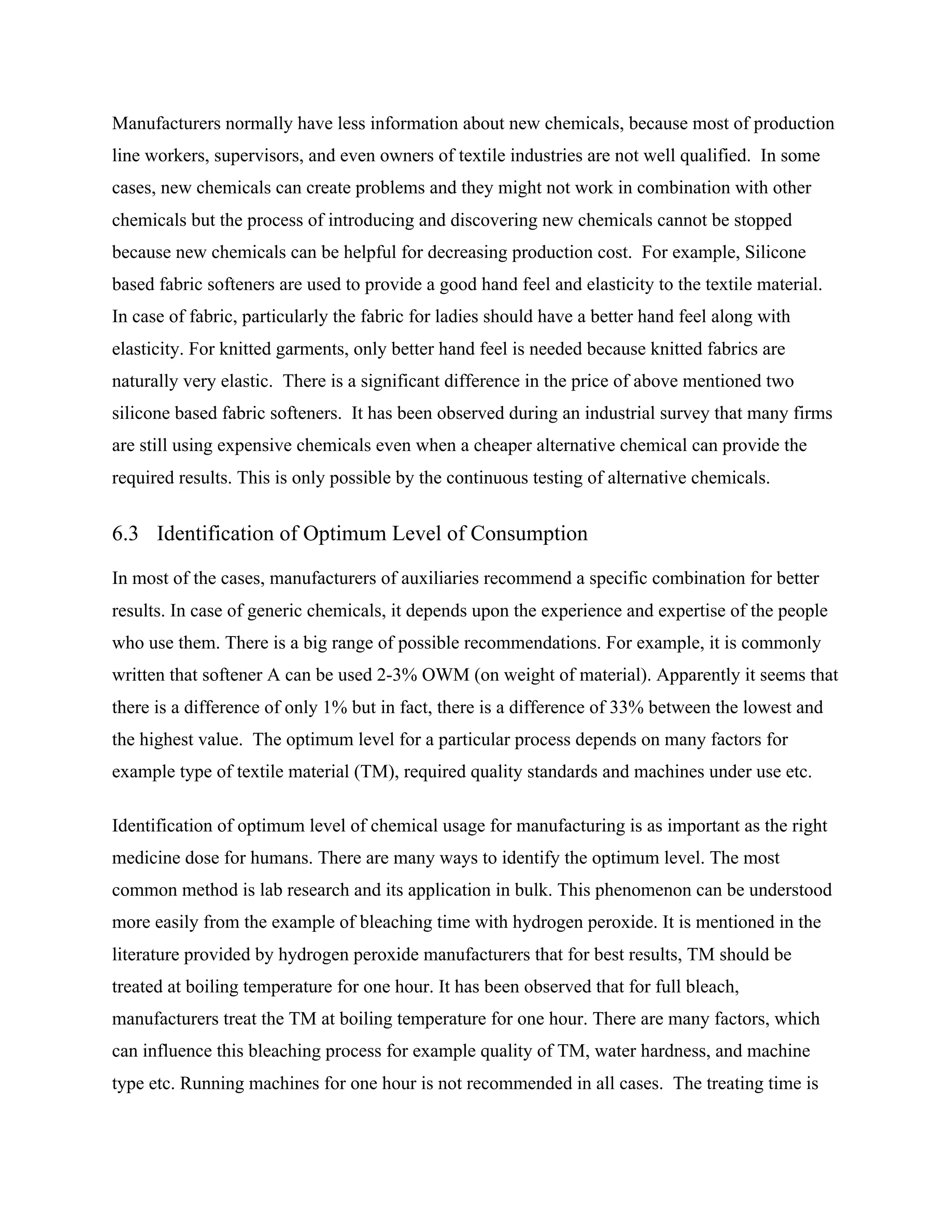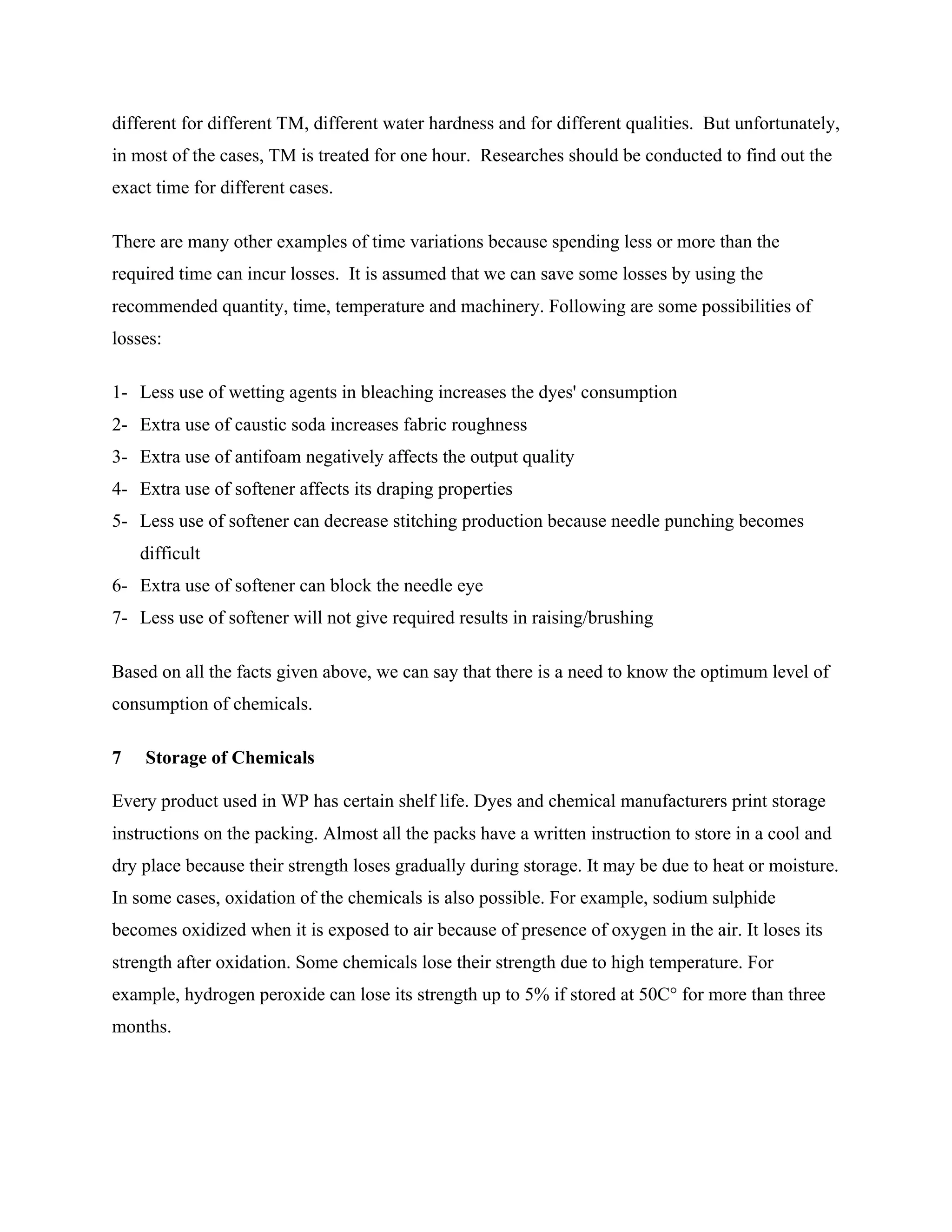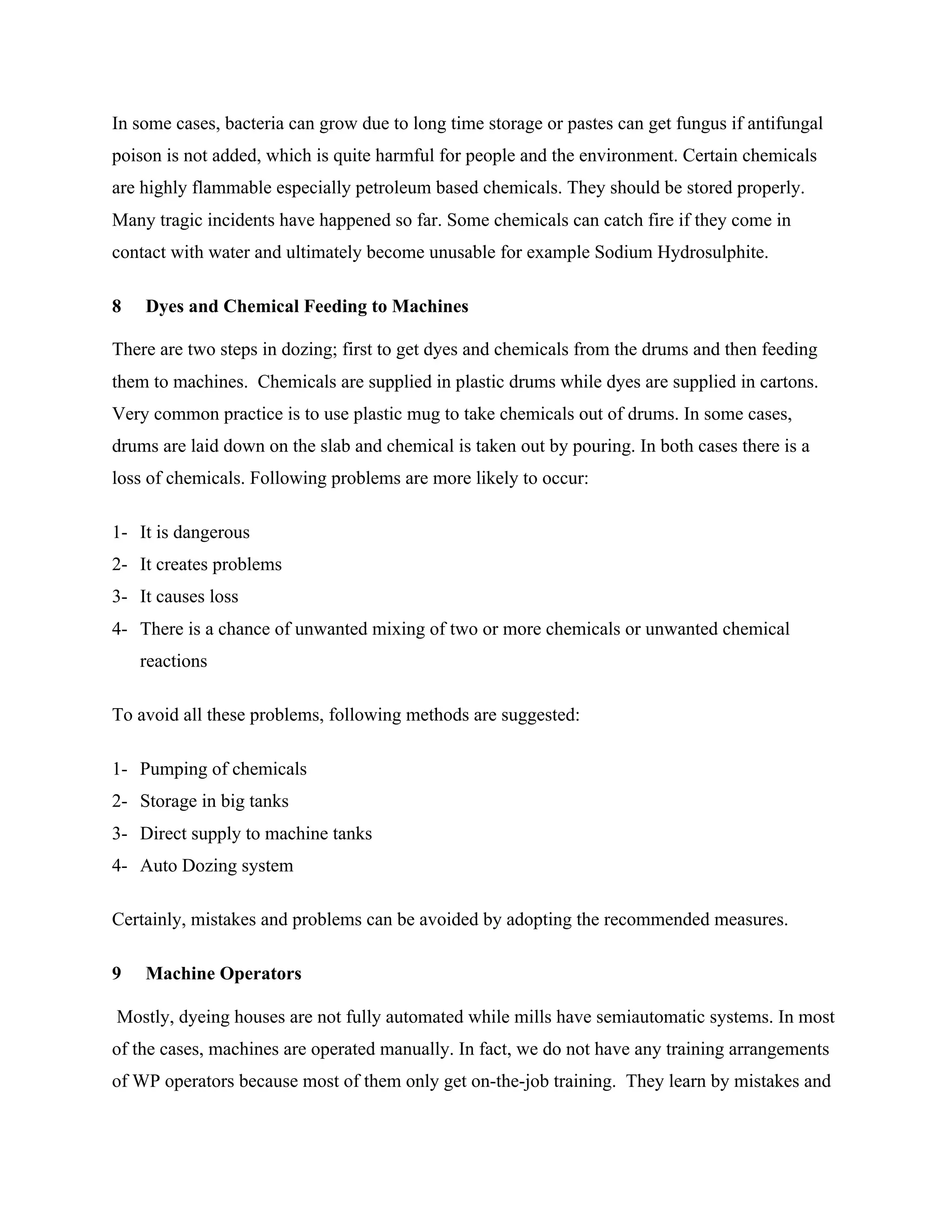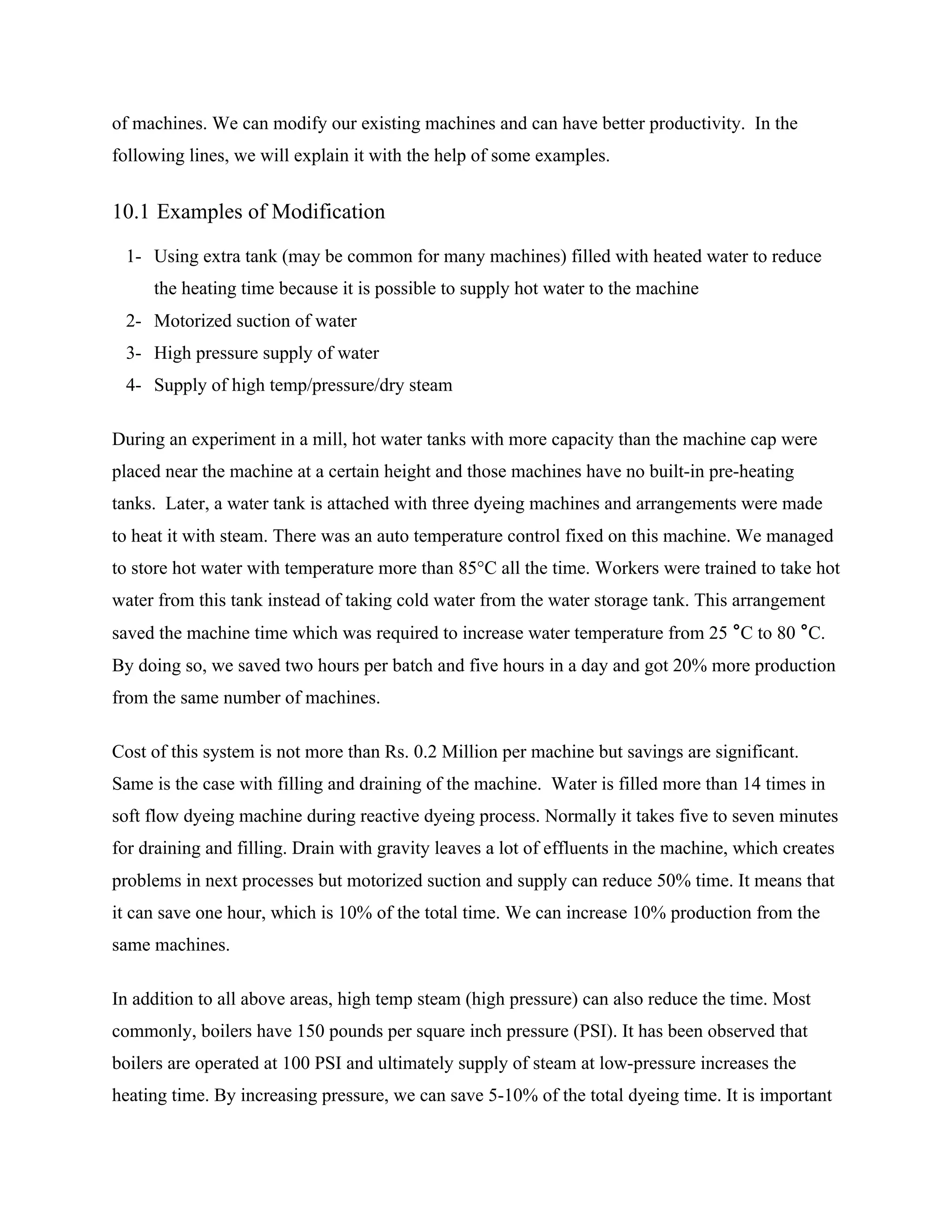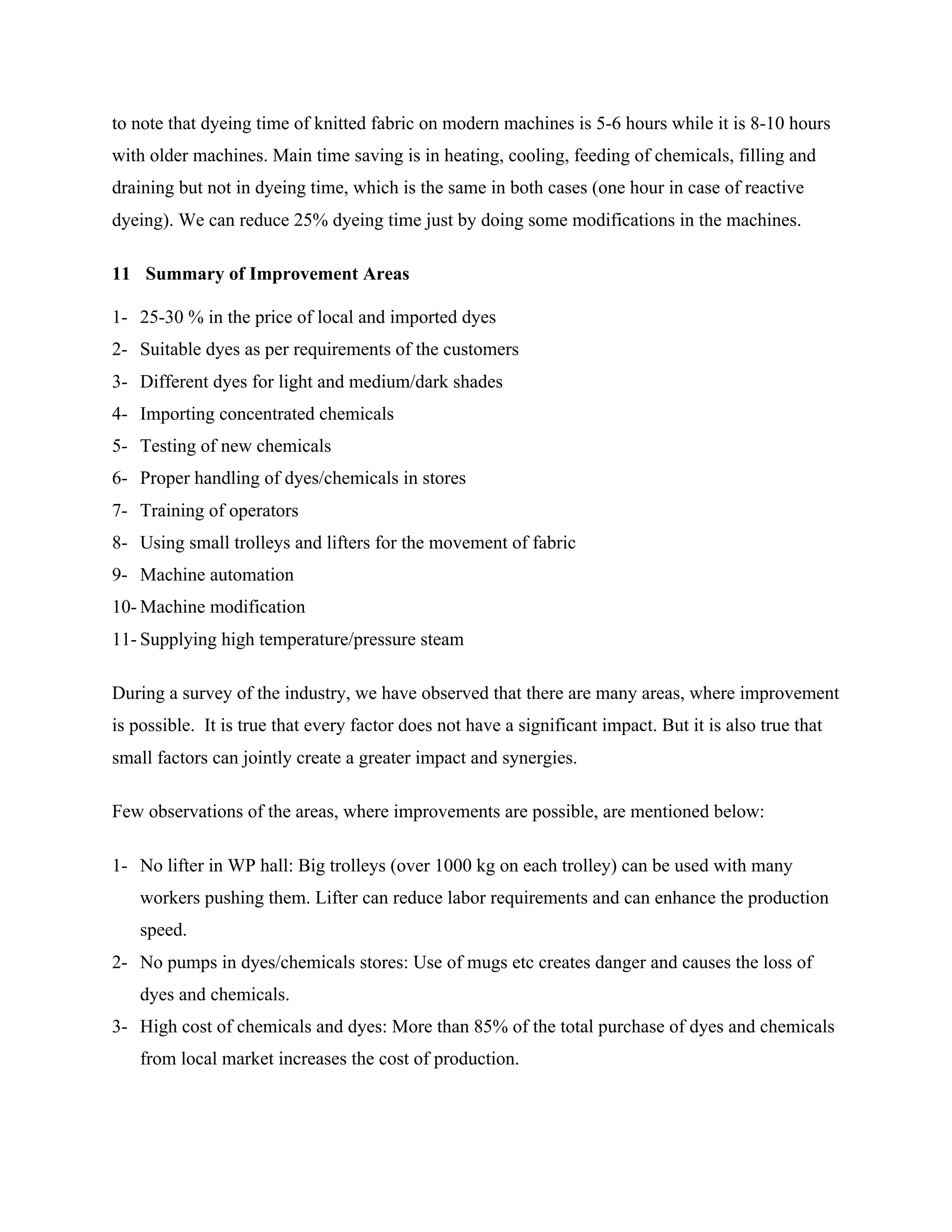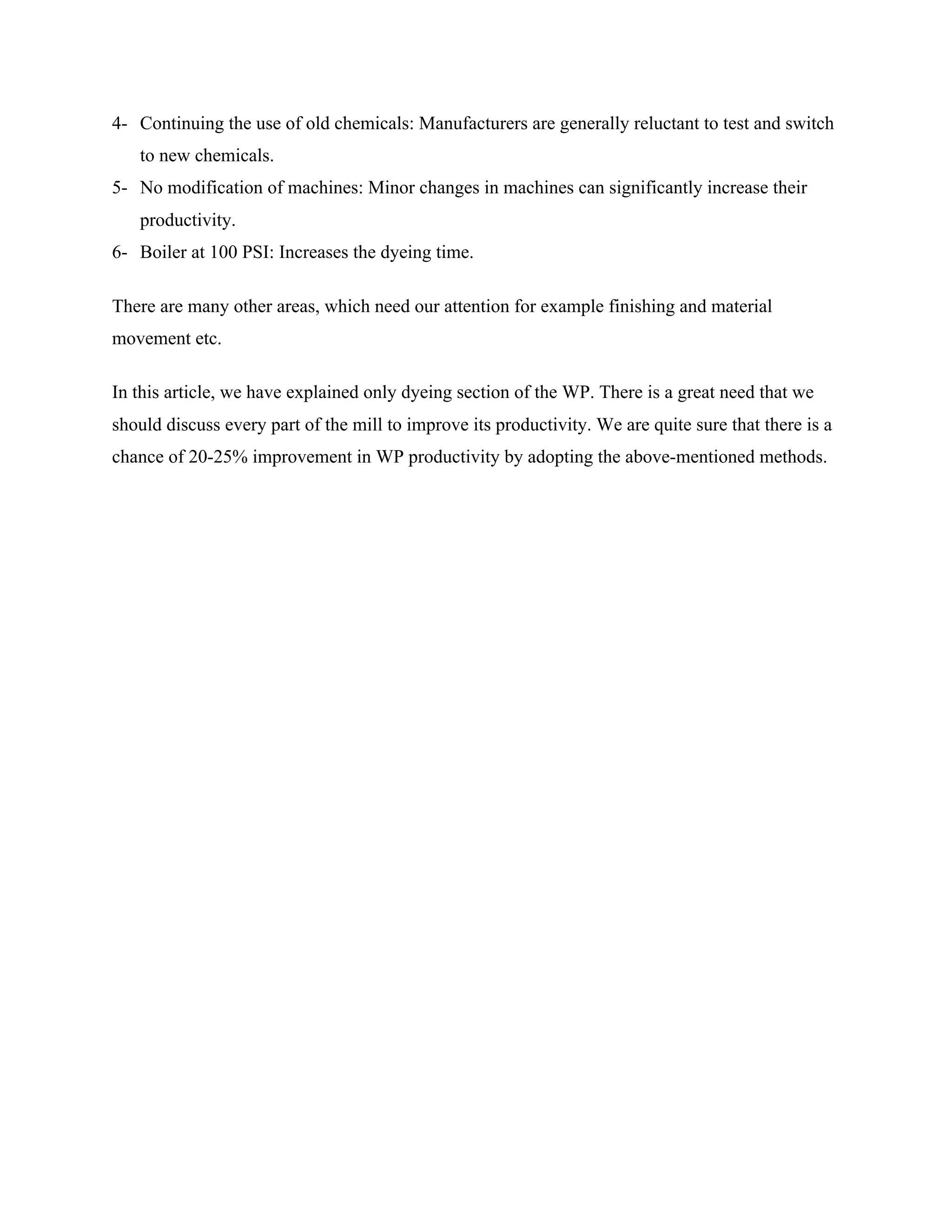This document discusses ways to improve productivity in wet processing, which includes bleaching, dyeing, printing, and finishing of textiles. It identifies several key factors that affect productivity, including selection and procurement of dyes and chemicals, machine modifications, process standardization, and use of information technology. Using concentrated chemicals instead of diluted ones, directly importing dyes, and identifying the optimal levels of dye and chemical usage can help reduce costs and improve productivity in wet processing.
